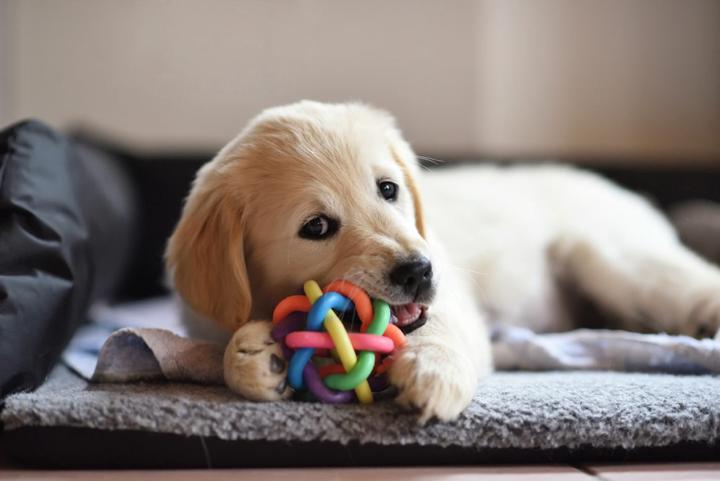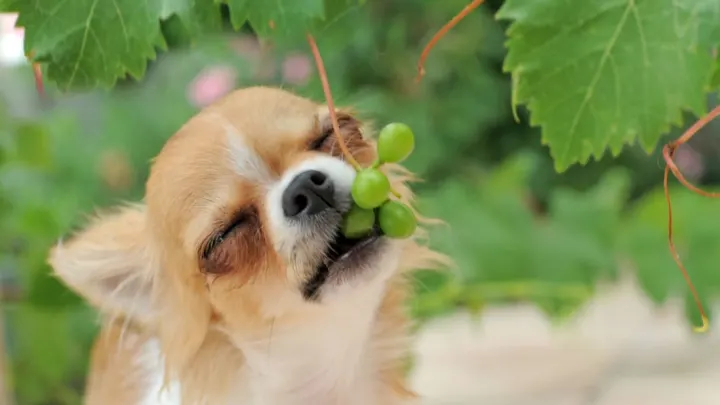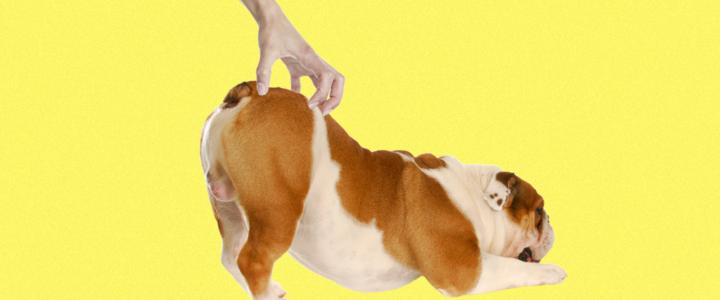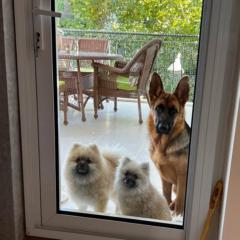
Write something
What is Wrong with Acana Dog Food?
Acana is a brand of premium pet food for dogs and cats that claims to be biologically suitable, meaning that it matches the normal diet and physiology of the animals. Acana employs fresh or raw animal components from local sources, balanced with full fruits and vegetables, and no grains or chemical additives. Acana has won multiple honors for its quality and creativity, and has dedicated clients that swear by its products. But is Acana dog food truly as fantastic as it sounds? Are there any downsides or hazards involved with feeding your dog Acana? In this post, we will analyze some of the potential concerns with Acana dog food, and help you determine if it is the correct choice for your beloved buddy. Potential Problems with Acana Dog Food While Acana dog food may seem like a great solution for many dog owners, there are some significant drawbacks that you should be aware of before buying it. Here are some of the most prevalent issues or concerns about Acana dog food: Price: Acana dog food is not cheap. It is one of the most costly kinds on the market, costing roughly $3 to $4 per pound, depending on the recipe and the quantity of the bag. This means that feeding your dog Acana might be a major expense, especially if you have a large or active dog that eats a lot. You may have to budget carefully or hunt for discounts or coupons to buy Acana dog food on a regular basis. Availability: Acana dog food is not extensively available in every store or online platform. You may have to look for a specific merchant that carries Acana items, or order directly from their website. This can be annoying or restrictive, especially if you run out of food or need to switch to a new recipe. You may also have to pay extra for shipping or delivery fees, which can add to the cost of Acana dog food. Variety: Acana dog food has a limited choice of recipes compared to other brands. They have four main lines: Classics, Heritage, Regionals, and Singles. Each line includes a few distinct formulations, but they are largely based on the same protein sources: chicken, turkey, lamb, cattle, hog, fish, and eggs. If your dog has allergies or sensitivities to any of these substances, or if you wish to give greater diversity in your dog’s diet, you may have problems finding a suitable alternative from Acana. You may also have to rotate between different recipes to prevent boredom or nutritional imbalances in your dog.
0
0

Why Does My Dog Keep Putting Her Puppy in Her Mouth?
If you have a dog who has recently given birth to a litter of pups, you may have observed that she sometimes picks up one or more of her puppies in her mouth and carries them around. This may seem like an unusual or even dangerous activity, but it is actually extremely typical and natural for mother dogs. In this post, we will explain why dogs do this and what you can do to assure the safety and well-being of both the mother and her puppies. Reasons Why Dogs Put Their Puppies in Their Mouth One important reason why a mother dog puts her youngster in her mouth is to carry them from one place to another. Puppies are born blind, deaf, and unable to move, rendering them wholly dependent on their mother for mobility. By lifting her puppy with her tongue, the mother dog provides a secure and efficient mode of transportation, ensuring her young ones are constantly close to her and away from potential dangers. Another reason why dogs put their babies in their mouth is to groom them. Mother dogs lick their puppies to clean them, boost their respiration and digesting, and bond with them. Sometimes, they may gently hold their puppy’s head or body in their mouth while licking them, especially if the puppy is restless or squirmy. This is not an indication of aggression or dominance, but rather a technique of calming and soothing the puppy. A third reason why dogs put their puppies in their mouth is to correct or discipline them. As pups grow bigger and start to explore their surroundings, they may get into trouble or disturb their mother by biting, barking, or playing too rough. Mother dogs may use their lips to grip or nip their puppy’s neck or ear to teach them manners and boundaries. This is also not an indication of violence or dominance, but rather a way of conveying and enforcing rules. When to Worry About Dogs Putting Their Puppies in Their Mouth While most of the time dogs put their puppies in their mouth for benign reasons, there are several occasions where this behavior may suggest a problem or a risk.
0
0

Can Dogs Eat Grape Leaves? What You Need to Know
Grape leaves are the edible leaves of the grapevine, a plant that produces grapes and raisins. They are used in cuisines around the world, especially in Mediterranean and Middle Eastern meals. But can dogs eat grape leaves? Are they safe or hazardous for your furry friend? The simple answer is yes, dogs can eat grape leaves, but only in moderation and with some safeguards. In this post, we will discuss why grape leaves can be useful or harmful for dogs, and how to feed them properly. Benefits of Grape Leaves for Dogs Grape leaves are rich in antioxidants, fiber, vitamin C, vitamin K, calcium, iron, and other minerals. They have anti-inflammatory, immune-boosting, and cancer-fighting properties. They can also help with: - Cooling: Grape leaves have a cooling effect on the body, which can be helpful for dogs who suffer from heatstroke or fever. - Arthritis: Grape leaves can reduce inflammation and pain in the joints, which can benefit dogs with arthritis or other joint problems. - Weight loss: Grape leaves are low in calories and high in fiber, which can help dogs feel full and prevent overeating. - Eye health: Grape leaves contain lutein and zeaxanthin, two antioxidants that protect the eyes from oxidative damage and age-related diseases. - Digestion: Grape leaves can soothe the stomach and intestines, and prevent or treat vomiting and diarrhea in dogs. Risks of Grape Leaves for Dogs Grape leaves are not toxic for dogs, but they can cause some problems if fed incorrectly or excessively. Some of the potential risks are: - Appetite loss: Grape leaves have a bitter taste that some dogs may not like. They may refuse to eat them or lose their appetite for other foods. - Stomach upset: Grape leaves contain ascorbic acid, a natural chemical that can irritate the stomach if consumed in large amounts. It can also interfere with the absorption of some medications. - Intestinal blockage: Grape leaves are tough and fibrous, which can make them hard to digest. If dogs swallow them whole or eat too many of them, they can cause an intestinal blockage that requires veterinary attention. - Poisoning: Grape leaves may be contaminated with pesticides, insecticides, or other chemicals that are harmful for dogs. They may also contain traces of grapes or raisins, which are highly toxic for dogs and can cause kidney failure. - Fertility issues: Grape leaves contain phytoestrogens, plant compounds that mimic estrogen. They can affect the hormonal balance and fertility of dogs, especially if they are pregnant or nursing.
0
0

Why Do Dogs Like Being Scratched Above Their Tail?
If you have a dog, you surely know that he loves to be scratched in particular places, especially above his tail. But why is that? What makes this place so irresistible for dogs? And is it a good or terrible thing to scratch your dog’s butt? In this essay, we will discuss the causes for this typical canine behavior and some pointers on how to do it well. The Sweet Spot Dogs have what is known as a "sweet spot," which is usually placed above their tail (which is what this article is about). This area is lovely for dogs to scratch because it includes a high density of nerve endings and has a high blood flow, making it sensitive to touch. Inside-the-ear scratching is equally as ideal for dogs as it is for people. Scratching your dog’s sweet spot might activate a response that causes him kick his hind leg, lick his lips, or even drool. This is because scratching encourages the release of endorphins, which are natural chemicals that make your dog feel happy and relaxed. Endorphins can also help relieve pain and stress, which is why some dogs may seek out scratching when they are frightened or uncomfortable. The Hard-to-Reach Area Another reason why dogs enjoy to be scratched above their tail is because it is a hard-to-reach location for them. They may be able to chew on their own tail when it itches, rub their butt across the floor, or roll around in the grass to alleviate any discomfort, but in general, it’s tough for them to get to that area. That’s why they appreciate when we scratch it for them, just like we appreciate someone scratching our back when we can’t reach it ourselves. Dogs usually aren’t too bashful in letting you know what they want. Most of them will turn away from you, making sure you notice their behind. Then they will stare at you over their shoulder, ears back, maybe accompanied by a begging whine or soft bark. If you comply, you’ll be rewarded with a pleasant and contented grin on their face, which sometimes comes with an approving snort or some other sound of pleasure. If you stop too quickly, expect more pleading.
0
0

What Does It Mean When Your Dog Sniffs Your Face? The Surprising Science Behind This Common Behavior
Dogs are remarkable creatures that can connect with humans in numerous ways. One of the most popular ways they do it is by sniffing our faces. But what does it signify when your dog sniffs your face? Is it a show of affection, curiosity, or something else? In this post, we will explore the unexpected science underlying this widespread behavior and what it indicates about your dog’s personality, emotions, and health. We will also give you some advice on how to respond to your dog’s face sniffing and how to prevent it if it becomes a problem. Why Do Dogs Sniff Faces? Dogs have a great sense of smell that is far more developed than ours. They can detect small changes in scents that we cannot notice, such as hormones, pheromones, moods, health issues, and even genetic information. Dogs use their noses to obtain information about their environment and the people and animals they encounter. They can discover a lot about someone by sniffing their face, including as their mood, gender, age, nutrition, health state, and even their goals. Sniffing faces is also a natural way for dogs to greet each other and show respect. In the wild, wolves and other canines sniff one other’s faces and mouths to establish their social hierarchy and bond with their pack mates. Domestic dogs have inherited this tendency from their ancestors and utilize it to communicate with other canines and people. What Does It Mean When Your Dog Sniffs Your Face? There are many possible reasons why your dog sniffs your face, depending on the context and the individual dog. Here are some of the most common ones: - Affection: Your dog may sniff your face to show you love and affection. Dogs often lick and nuzzle their owners’ faces as a way of expressing their attachment and gratitude. Sniffing your face is another way of saying “I love you” and “You are my family”. - Curiosity: Your dog may sniff your face to satisfy their curiosity and learn more about you. Dogs are naturally curious animals that want to explore everything around them. They may sniff your face to find out what you have been doing, where you have been, who you have met, and how you are feeling. - Communication: Your dog may sniff your face to communicate something to you or get your attention. Dogs use their noses to send and receive messages from other dogs and humans. They may sniff your face to tell you that they are hungry, thirsty, bored, excited, happy, sad, or anxious. They may also sniff your face to get you to play with them, pet them, or give them a treat. - Submission: Your dog may sniff your face to show you respect and submission. Dogs are social animals that follow a certain hierarchy in their groups. They often show deference to the leader or the dominant member by licking or sniffing their faces or mouths. If your dog sniffs your face, they may be acknowledging you as their leader or showing you that they are not a threat. - Health: Your dog may sniff your face to check on your health or alert you to a potential problem. Dogs can sense when something is wrong with us by smelling changes in our body chemistry or detecting diseases such as cancer or diabetes. They may sniff your face to make sure you are okay or to warn you that you need medical attention.
0
0

1-30 of 50
Public group
Join our vibrant dog-loving community! Top-notch training programs for your furry friends while fostering a supportive and inclusive environment.
powered by
This group has been archived

